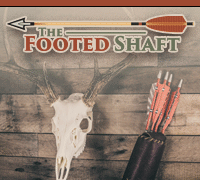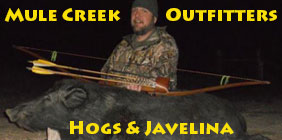Here's some more info from MDNR. I'll get ahold of Brent Rudolph and see if he has any WSI numbers yet.
http://www.michigan.gov/dnr/0%2C1607%2C7-153-10319-109131--%2C00.html Monitoring Winter's Impact on Deer
Michigan winters can be tough on wildlife, including white-tailed deer. When the winter winds howl and snow whips across fields locking the landscape in an icy grip, deer in our northern areas seek shelter in conifer swamps where they likely will remain until March or April.
Wintering whitetails are remarkably adaptable animals, but our harsh northern climate claims some deer every year.
Winter severity has been measured by the Department of Natural Resources at field offices across the state since 1969. Initially it was developed to measure the stress winter weather placed on white-tailed deer, but since has been applied to other wildlife species.
The department's method of calculating winter severity incorporated a measurement of wind chill, snow compaction and snow depth starting in November and continuing until the end of April.
Each week, biologists would collect data from a chillometer (a device developed to measure the amount of energy required to maintain a pot of water at 39 degrees F.) and snow compaction gauge. Snow compaction and depth were measured by dropping the compaction gauge into the snow. The depth the compaction gauge sinks was recorded and added to the energy reading from the chillometer to produce a weekly winter severity index (WSI) measure.
The seasonal WSI then could be calculated by summing the values for each week. The number generated using the WSI procedure allowed a general comparison of winter conditions from one year to the next.
According to DNR Research Specialist Brent Rudolph, a review of historical data shows that winter losses appear highest when the WSI reaches a mark of 120 or more.
"But it's really not as simple as just labeling any given winter as harsh, moderate or mild," Rudolph said. "There just are too many variables involved."
As its name suggests, the WSI can only generally track the severity of weather conditions that may be stressful to wildlife and cannot be used to directly quantify impacts on wildlife populations.
Although useful, this method of collecting WSI measurements required regular equipment maintenance, absolute consistency in measurement by many different employees, and great travel times to some of the weather station locations.
So, beginning in 2005, Rudolph and other DNR biologists are using a new, automated method of determining winter severity, which eliminates some of the complications associated with the old method of WSI data collection.
The new method uses data collected at weather stations established and maintained by the National Oceanic and Atmospheric Administration. These stations collect data hourly and record the readings on the Internet. By selecting specific weather stations around the state, a WSI value (comparable to values collected in the past) can be determined.
The new WSI allows the same kind of general comparisons of weather conditions from one year to the next while reducing the time and resources required. The DNR now offers an online WSI Report that contains graphs showing progression of the WSI throughout the winter season (November through April) by region The graphs show the current year related to the average weekly regional WSI.
"Deer are well-equipped to survive even the harshest conditions during a 'typical' winter period," DNR Big-Game Specialist Rod Clute. "Their metabolism declines during the winter months, enabling them to conserve energy and rely heavily on fat stores during adverse periods or when the availability of food is limited."
In winter, Clute said deer instinctively seek protective cover in areas commonly referred to as "deer yards," to minimize body heat-loss and the hazards of deep snow.
"Because of a strong homing instinct, deer may travel distances of 40 miles or more to their traditional wintering grounds." Clute said. "It has little to do with the availability of food."
However, when severe conditions arrive earlier (November and December) or linger longer (April) than usual, winter mortality or poor fawn production the following spring can have a noticeable effect on deer populations in some areas.
Biologists, therefore, must balance future management recommendations with more subtle aspects of where and when harsh weather occurs, rather than simply using the general severity of winter conditions.














